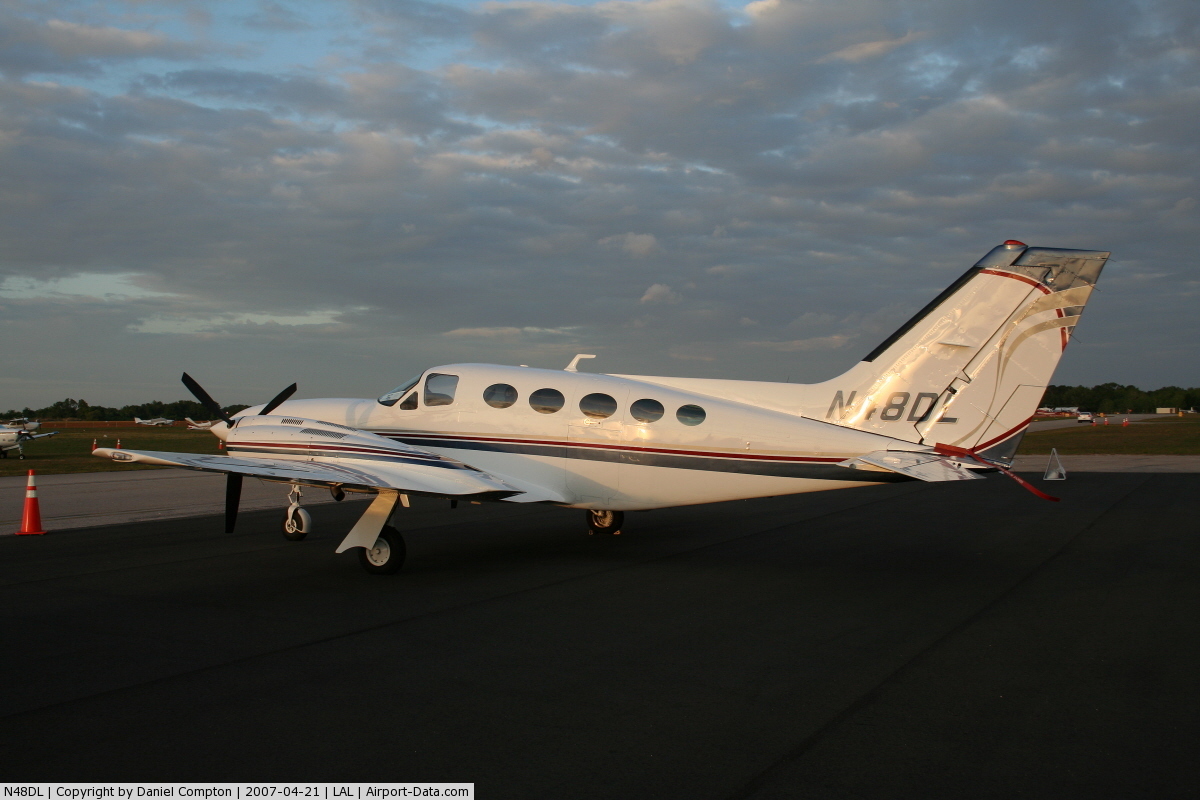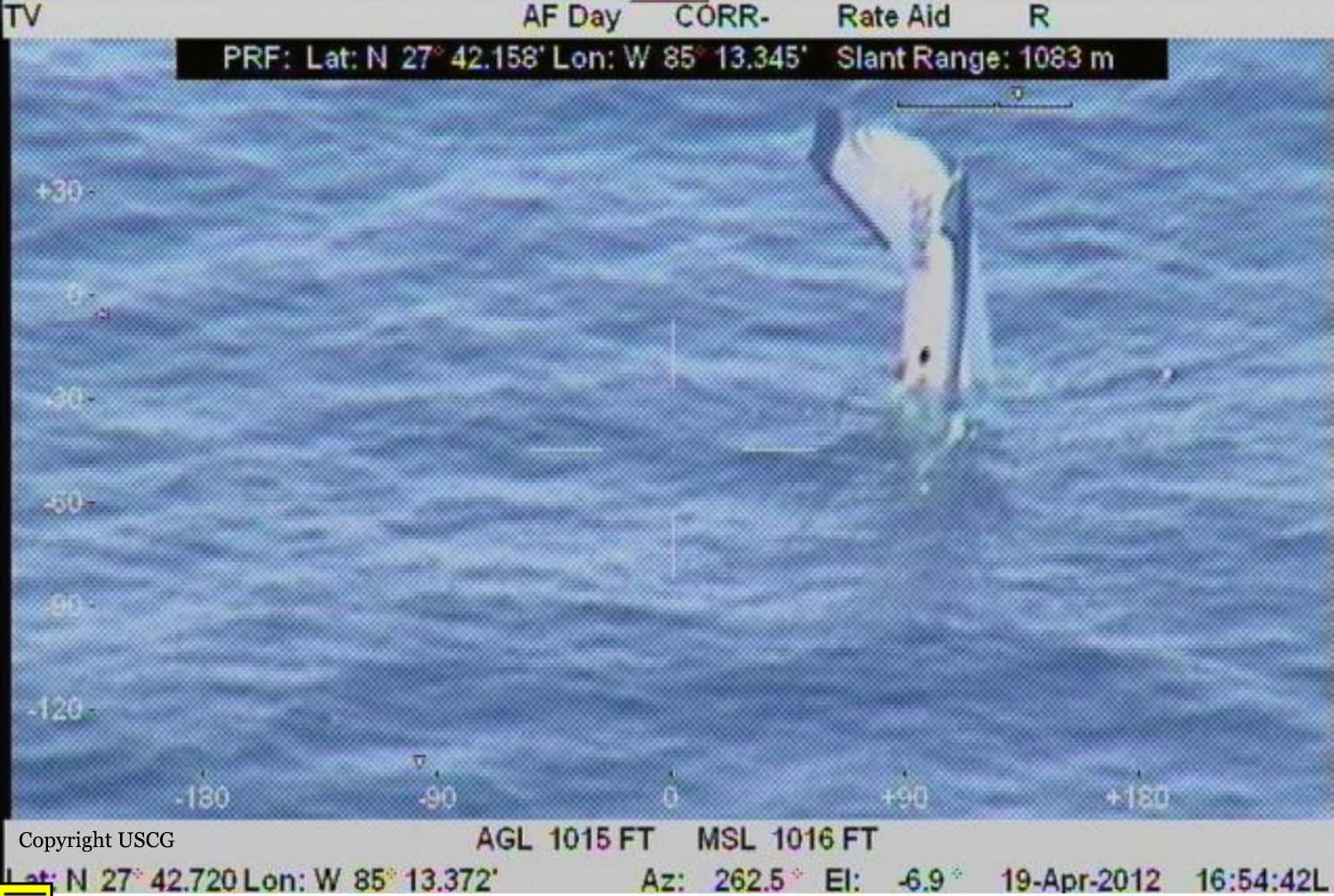Country
Crash of a Cessna 421C Golden Eagle III in Lyon-Bron: 4 killed
Date & Time:
Sep 24, 2013 at 1045 LT
Registration:
N556MB
Survivors:
No
Schedule:
Lyon - Aix-les-Milles
MSN:
421C-00468
YOM:
1978
Crew on board:
1
Crew fatalities:
Pax on board:
3
Pax fatalities:
Other fatalities:
Total fatalities:
4
Captain / Total hours on type:
12.00
Copilot / Total hours on type:
3
Aircraft flight hours:
3661
Circumstances:
After takeoff from runway 34 at Lyon-Bron Airport, while in initial climb at a height of 200 feet, the twin engine airplane deviated to the left, rolled to the left and then veered to the left with a low rate of climb. Shortly after passing the end of the runway, the airplane lost height then struck the ground and caught fire. The airplane was destroyed by a post crash fire and all four occupants were killed. For unknown reasons, the pilot-in-command was seating in the right seat.
Probable cause:
The accident probably occurred as a result of an asymmetrical flight starting from the rotation that the pilot was not able to control. As technical examinations and observations from the wreckage could not give any conclusive malfunction of the engines or systems, the initial cause is most likely an improper adjustment of the steering trim before takeoff. The poor experience of the pilot on this high powered and complex aircraft as well as the low height reached did not allow the pilot to understand and manage the situation quickly and avoid the loss of control.
Final Report:

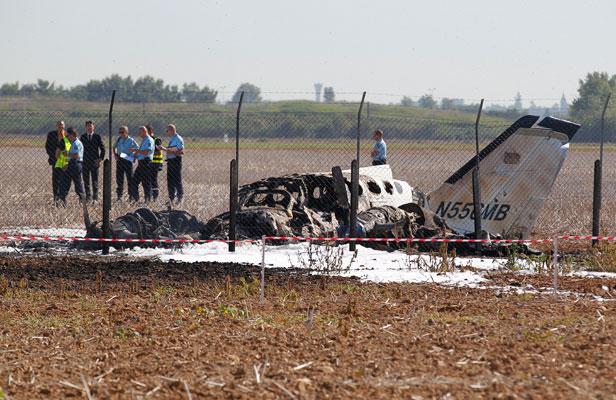


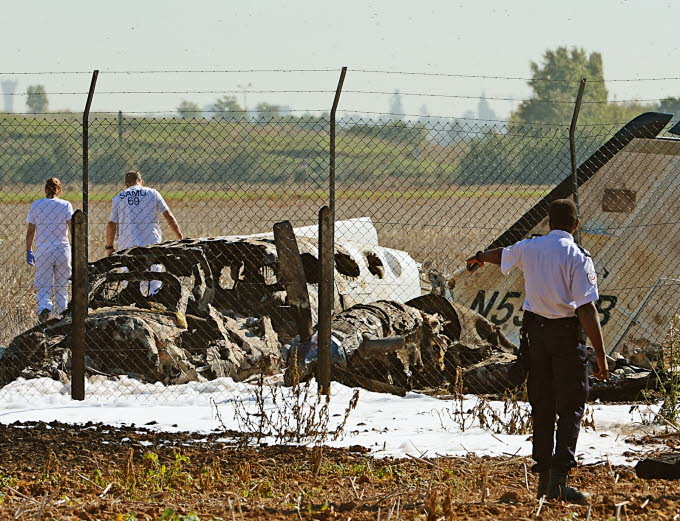
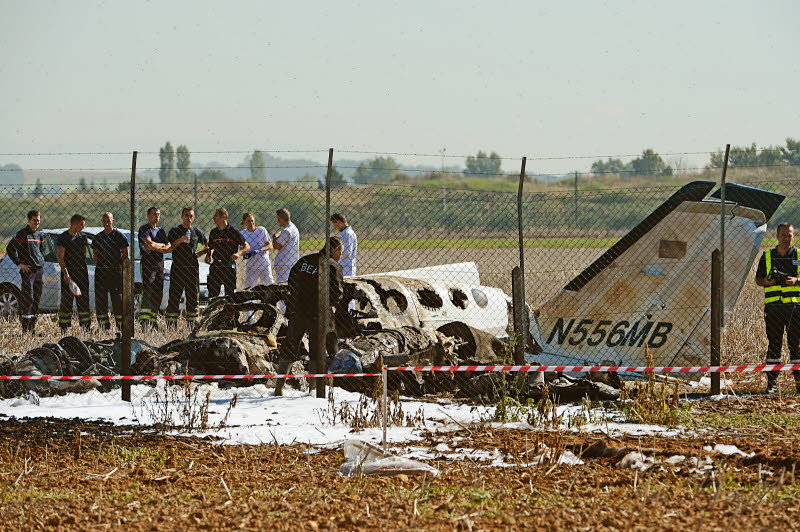
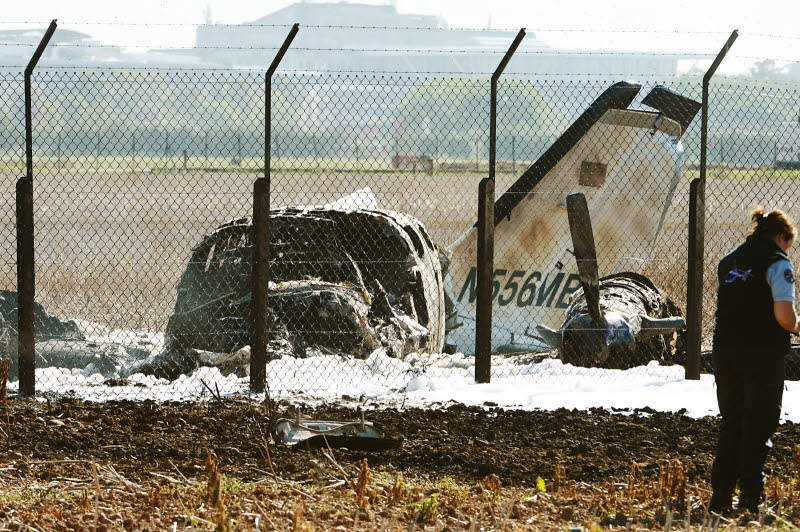
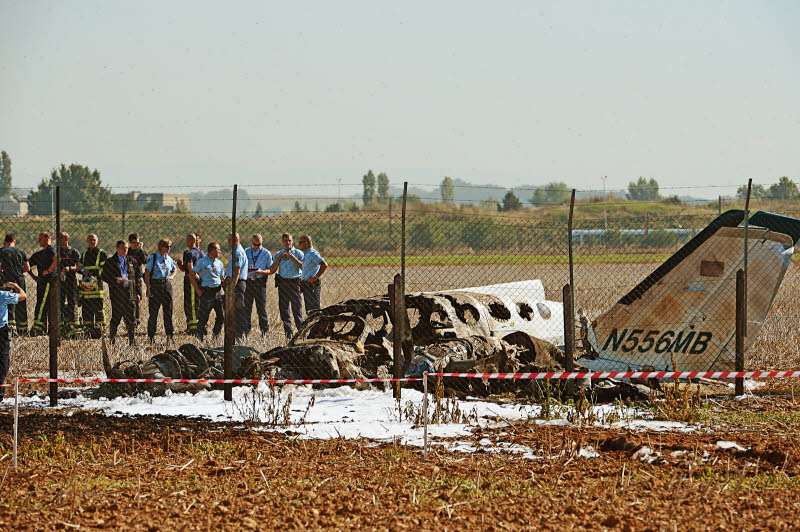

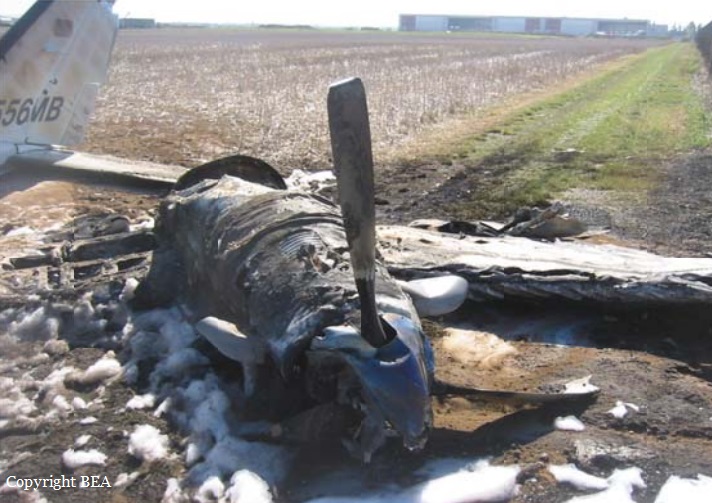
Crash of a Cessna 421C Golden Eagle III in Paris: 1 killed
Date & Time:
Aug 27, 2013 at 1120 LT
Registration:
N229H
Survivors:
No
Schedule:
Paris - Terre Haute
MSN:
421C-0088
YOM:
1976
Crew on board:
1
Crew fatalities:
Pax on board:
0
Pax fatalities:
Other fatalities:
Total fatalities:
1
Captain / Total hours on type:
2000.00
Aircraft flight hours:
3000
Circumstances:
Company personnel reported that, in the weeks before the accident, the airplane's left engine had been experiencing a problem that prevented it from initially producing 100 percent power. The accident pilot and maintenance personnel attempted to correct the discrepancy; however, the discrepancy was not corrected before the accident flight, and company personnel had previously flown flights in the airplane with the known discrepancy. Witnesses reported observing a portion of the takeoff roll, which they described as slower than normal. However, the airplane was subsequently blocked from their view. Examination of the runway environment showed that, during the takeoff roll, the airplane traveled the entire length of the 4,501-ft runway, continued to travel through a 300-ft-long grassy area and a 300- ft-long soybean field, and then impacted the top of 10-ft-tall corn stalks for about 50 ft before it began to climb. About 1/2 mile from the airport, the airplane impacted several trees in a leftwing, nose-low attitude, consistent with the airplane being operated below the minimum controllable airspeed. The main wreckage was consumed by postimpact fire. Postaccident examinations revealed no evidence of mechanical anomalies with the airframe, right engine, or propellers that would have precluded normal operation. Given the left engine's preexisting condition, it is likely that its performance was degraded; however, postimpact damage and fire preluded a determination of the cause of the problem.
Probable cause:
The pilot's failure to abort the takeoff during the ground roll after detecting the airplane's degraded performance. Contributing to the accident was the pilot's decision to attempt a flight with a known problem with the left engine and the likely partial loss of left engine power for reasons that could not be determined during the postaccident examination of the engine.
Final Report:
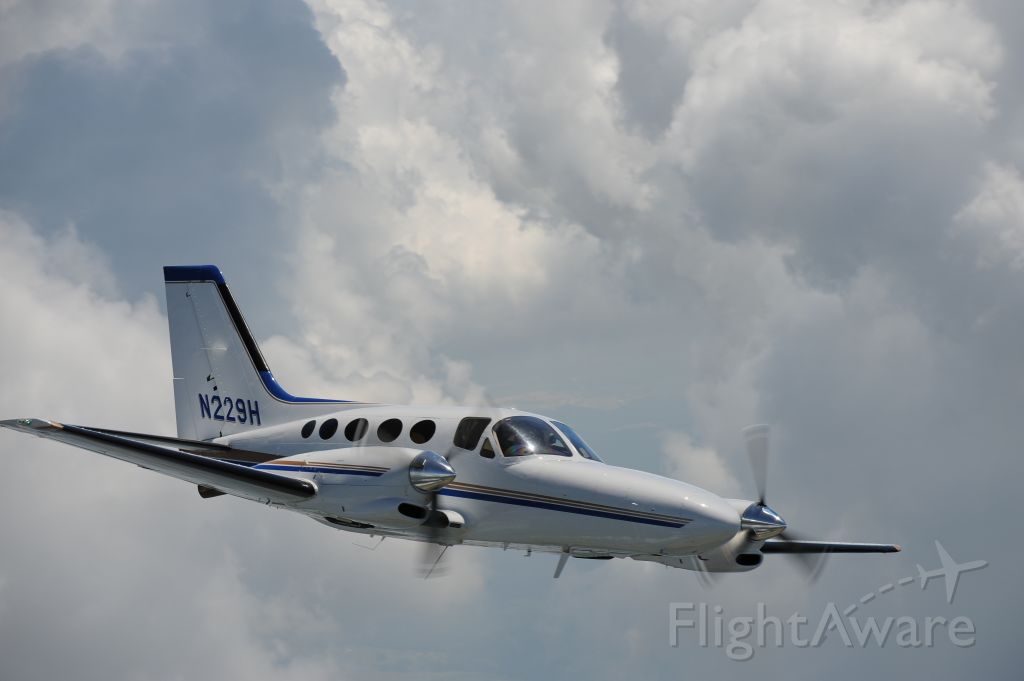
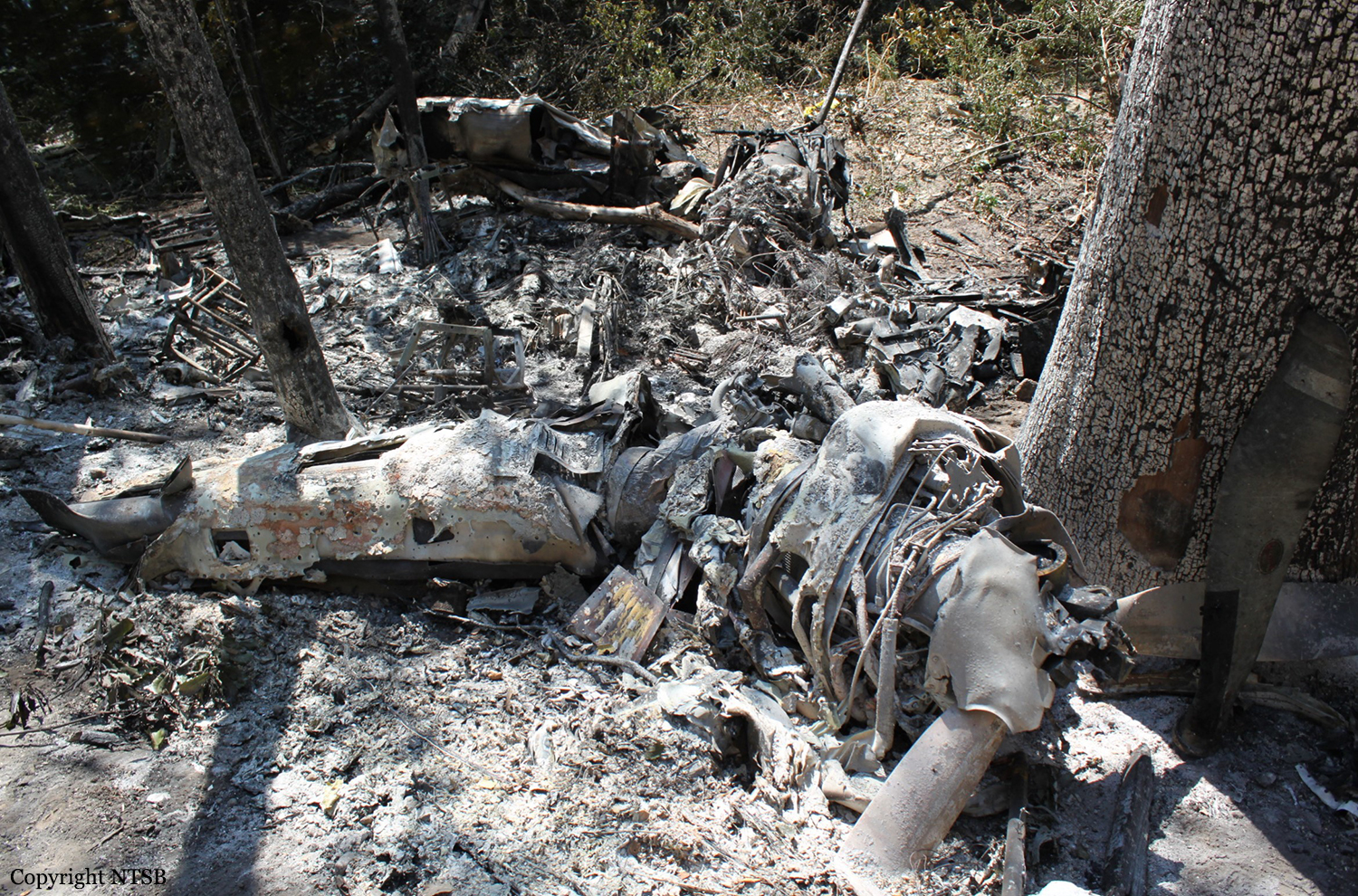
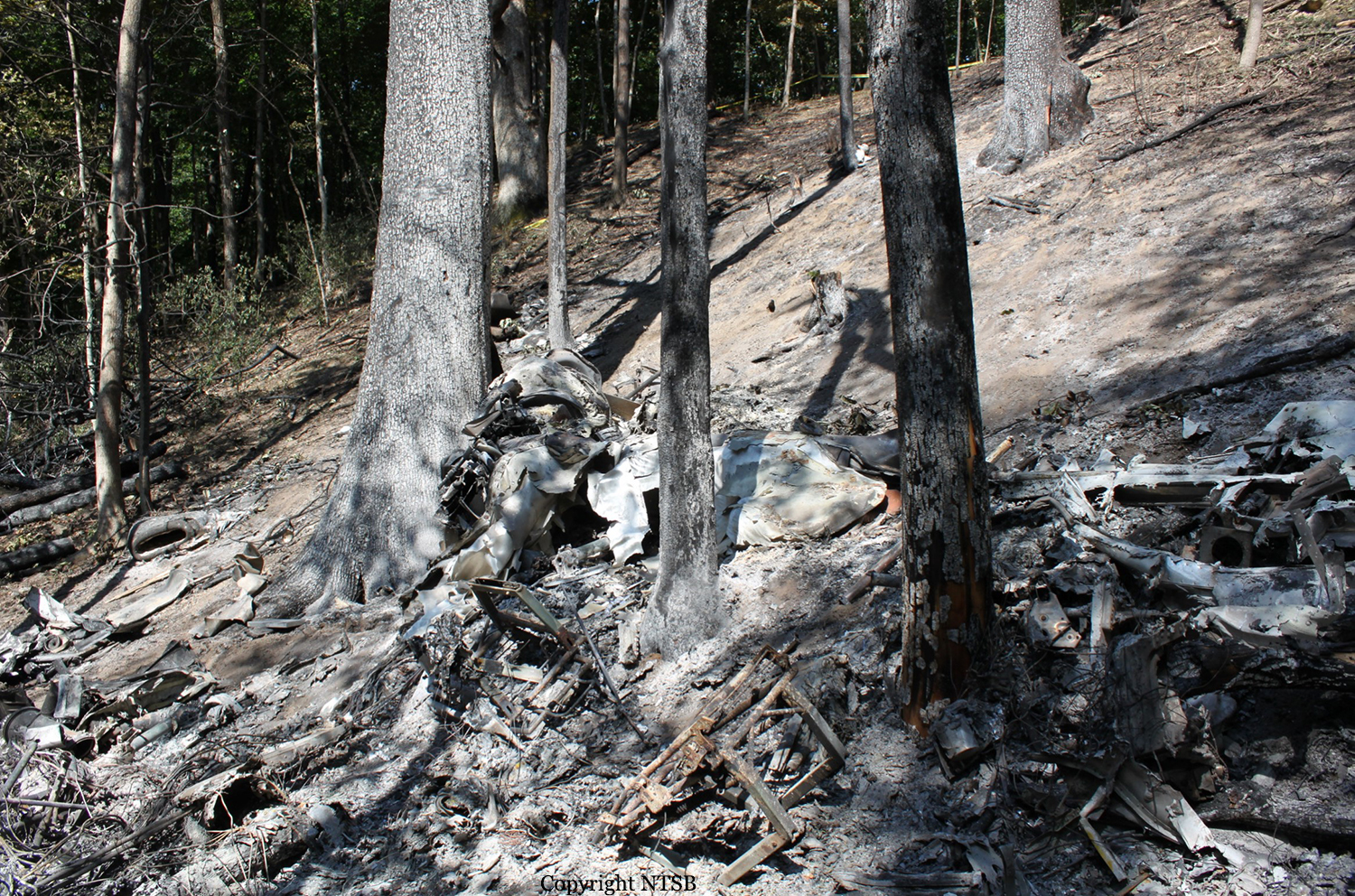
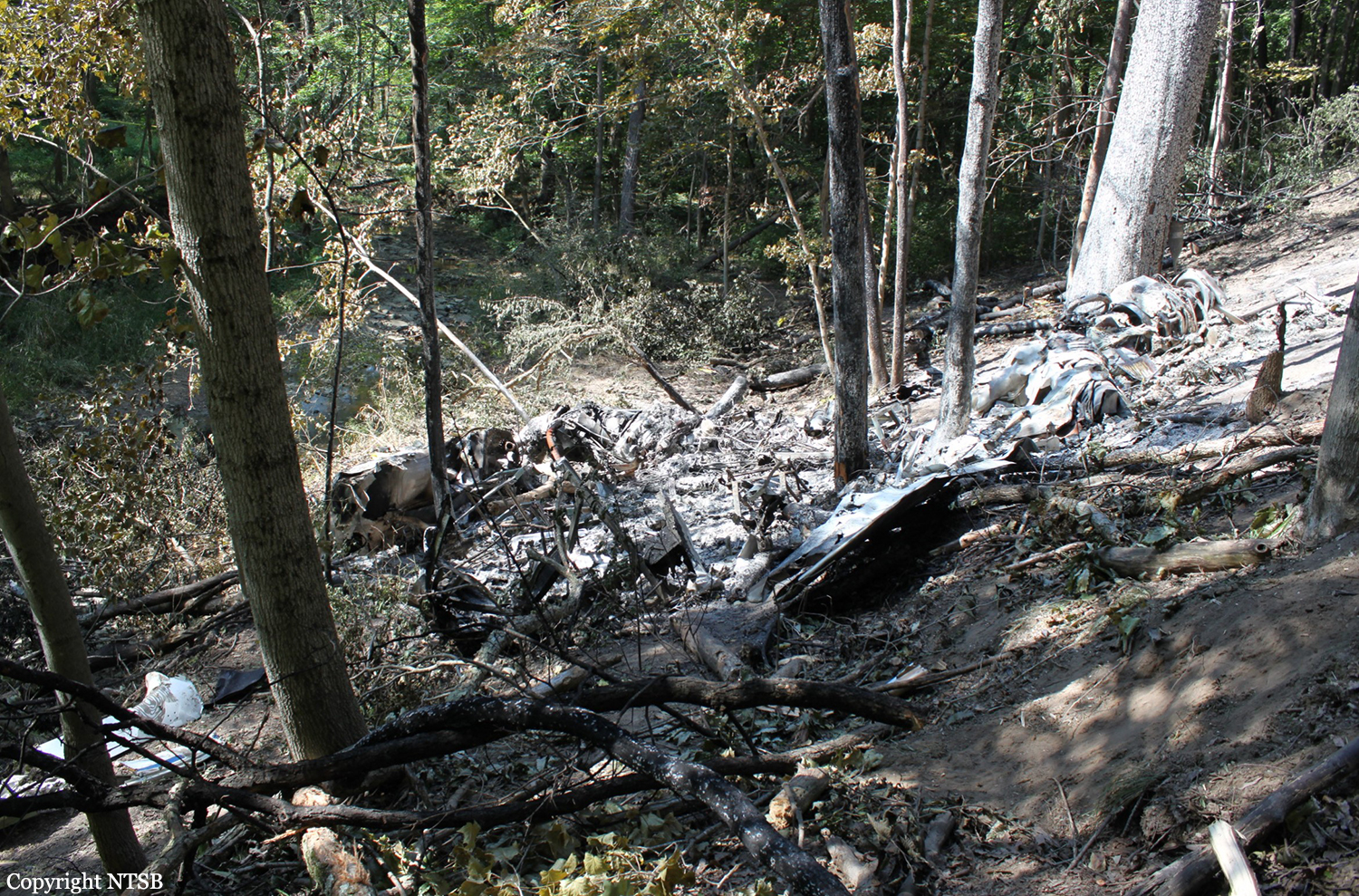
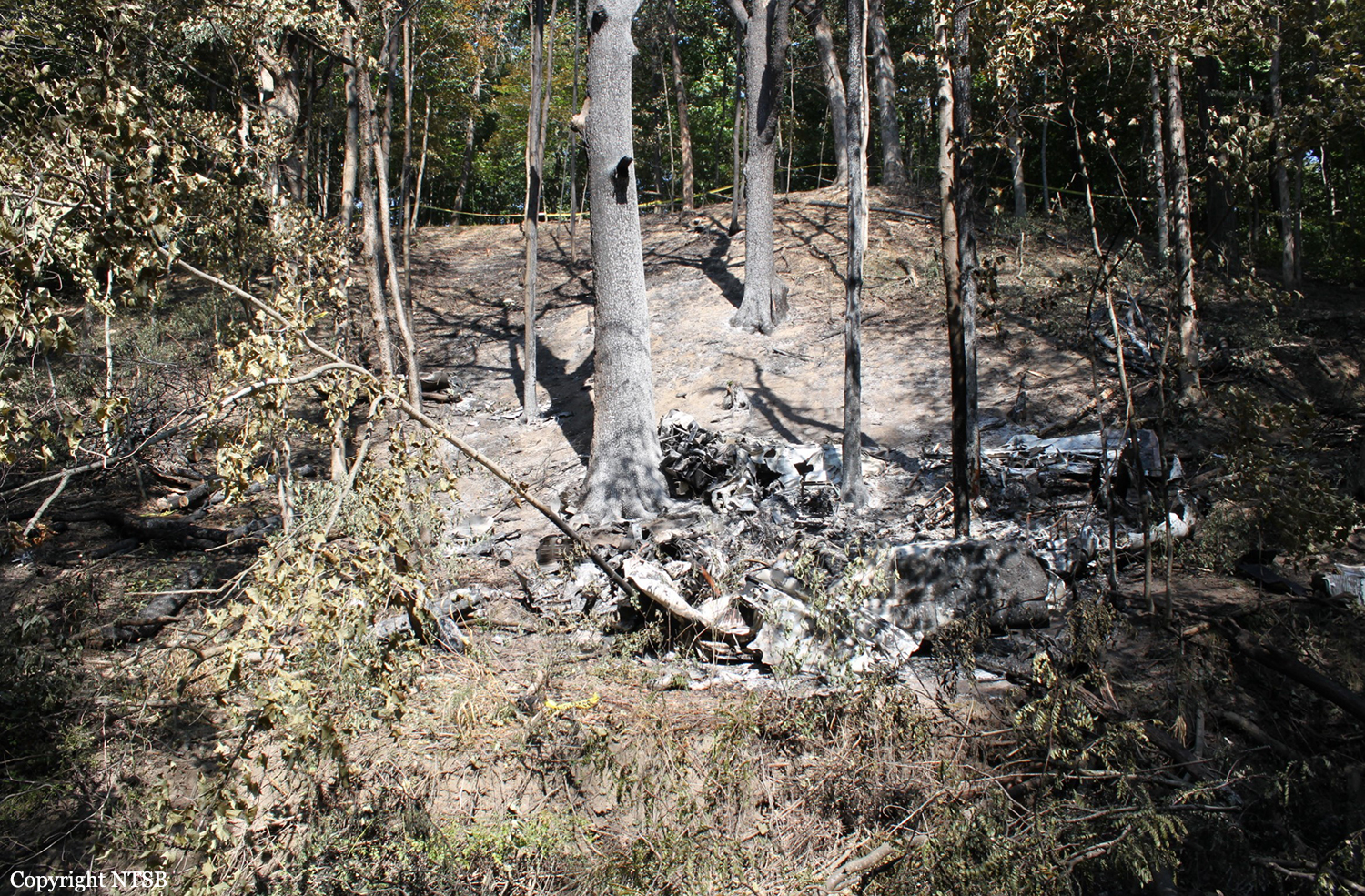
Crash of a Cessna 421C Golden Eagle III near Floriston: 1 killed
Date & Time:
May 16, 2013 at 1330 LT
Registration:
N421W
Survivors:
No
Schedule:
San Jose - Reno
MSN:
421C-0868
YOM:
1980
Crew on board:
1
Crew fatalities:
Pax on board:
0
Pax fatalities:
Other fatalities:
Total fatalities:
1
Captain / Total hours on type:
79.00
Aircraft flight hours:
9086
Circumstances:
During a cross-country instrument flight rules (IFR) flight, the air traffic controller cleared the pilot to begin his initial descent for landing and issued a heading change to begin the approach. The pilot acknowledged the altitude and heading change. One minute later, the controller noticed that the airplane's radar track was not tracking the assigned heading. The controller queried the pilot as to his intentions, and the pilot replied that he was in a spin. There were no further communications with the pilot. The wreckage was subsequently located in steep mountainous terrain. A study of the weather indicated widespread cloud cover in the area around the time of the accident. A witness near the accident site reported that he heard an airplane in a dive but could not see it due to the very dark clouds in the area. He heard the engine noise increase and decrease multiple times. It is likely that the pilot entered into the clouds and failed to maintain airplane control. The changes in the engine noise were most likely the result of the pilot's attempt to recover from the spin. About 8 months before the accident, the pilot completed the initial pilot training course in the accident airplane and was signed off for IFR currency; however, recent or current IFR experience could not be determined. Examination of the fragmented airplane and engines revealed no abnormalities that would have precluded normal operation.
Probable cause:
The pilot's failure to maintain airplane control during descent while operating in instrument meteorological conditions.
Final Report:
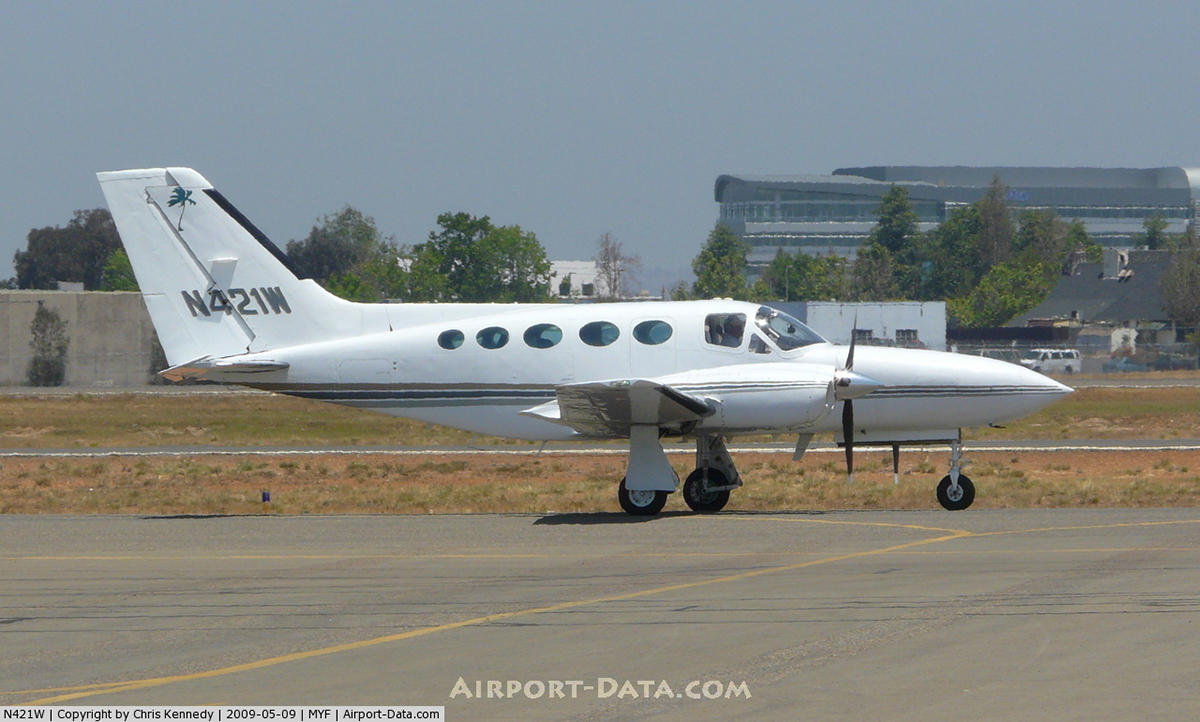

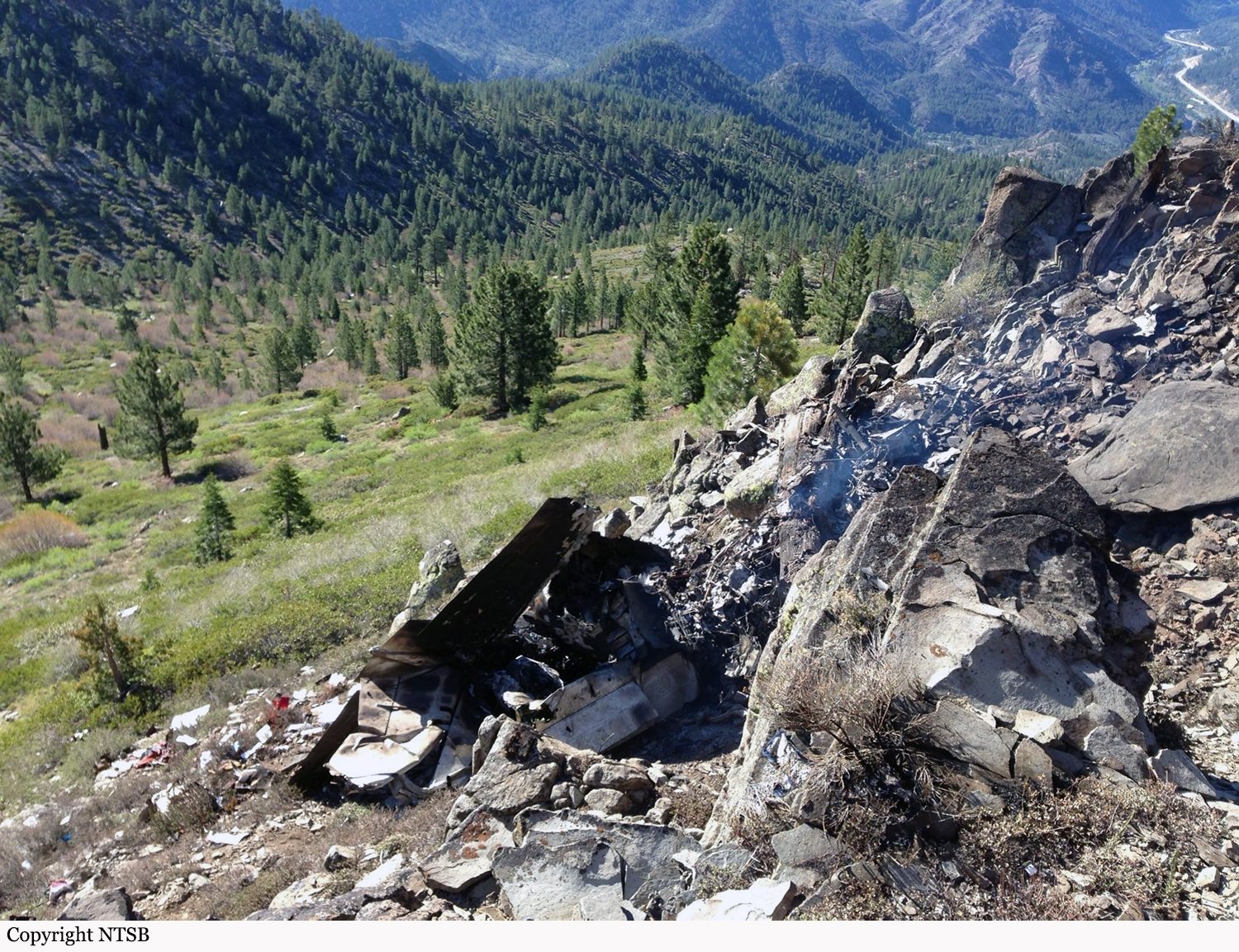
Crash of a Cessna 421C Golden Eagle III in Palm Beach County: 1 killed
Date & Time:
Dec 8, 2012 at 1334 LT
Registration:
N297DB
Survivors:
No
Schedule:
Palm Beach County - Kendall
MSN:
421C-0826
YOM:
1980
Crew on board:
1
Crew fatalities:
Pax on board:
0
Pax fatalities:
Other fatalities:
Total fatalities:
1
Captain / Total hours on type:
100.00
Aircraft flight hours:
7040
Circumstances:
On December 8, 2012, at 1334 eastern standard time, a Cessna 421C, N297DB, operated by a private individual, was destroyed when it collided with trees and terrain following a loss of control after takeoff from North Palm Beach County Airpark (LNA), Lantana, Florida. The commercial pilot was fatally injured. Visual meteorological conditions prevailed, and no flight plan was filed for the personal flight, which was conducted under the provisions of Title 14 Code of Federal Regulations Part 91. The pilot took delivery of the airplane from a maintenance facility that had just completed an annual inspection and repainting of the airplane. According to the owner of the facility, who was a certificated pilot and an airframe and powerplant mechanic, the pilot completed the preflight inspection and the airplane was towed outside. The pilot started the airplane, but then shutdown to resolve an alternator charging light. Afterwards, the pilot stated that he planned to fly to Okeechobee, Florida, complete a few landings, and then continue to Miami. According to the mechanic, the pilot performed a ground run of the airplane for several minutes before taxiing to the approach end of Runway 3 for takeoff. The airplane lifted off about halfway down the runway and climbed at a "normal" rate. The mechanic then observed the airplane suddenly yaw to the left "for a second or two" and the airplane's nose continued to pitch up before rolling left and descending vertically, nose-down, until it disappeared from view. Several witnesses provided similar accounts to a Federal Aviation Administration (FAA) inspector and the local sheriff's department. One witness, a certificated flight instructor said, "The airplane just kept pitching up, and then it looked like a VMC roll."
Probable cause:
The pilot's failure to follow established engine-out procedures and to maintain a proper airspeed after the total loss of engine power on one of the airplane’s two engines during the initial climb. Contributing to the accident was the total loss of engine power due to a loss of torque on the crankcase bolts for reasons that could not be determined because of impact- and fire-related damage to the engine.
Final Report:



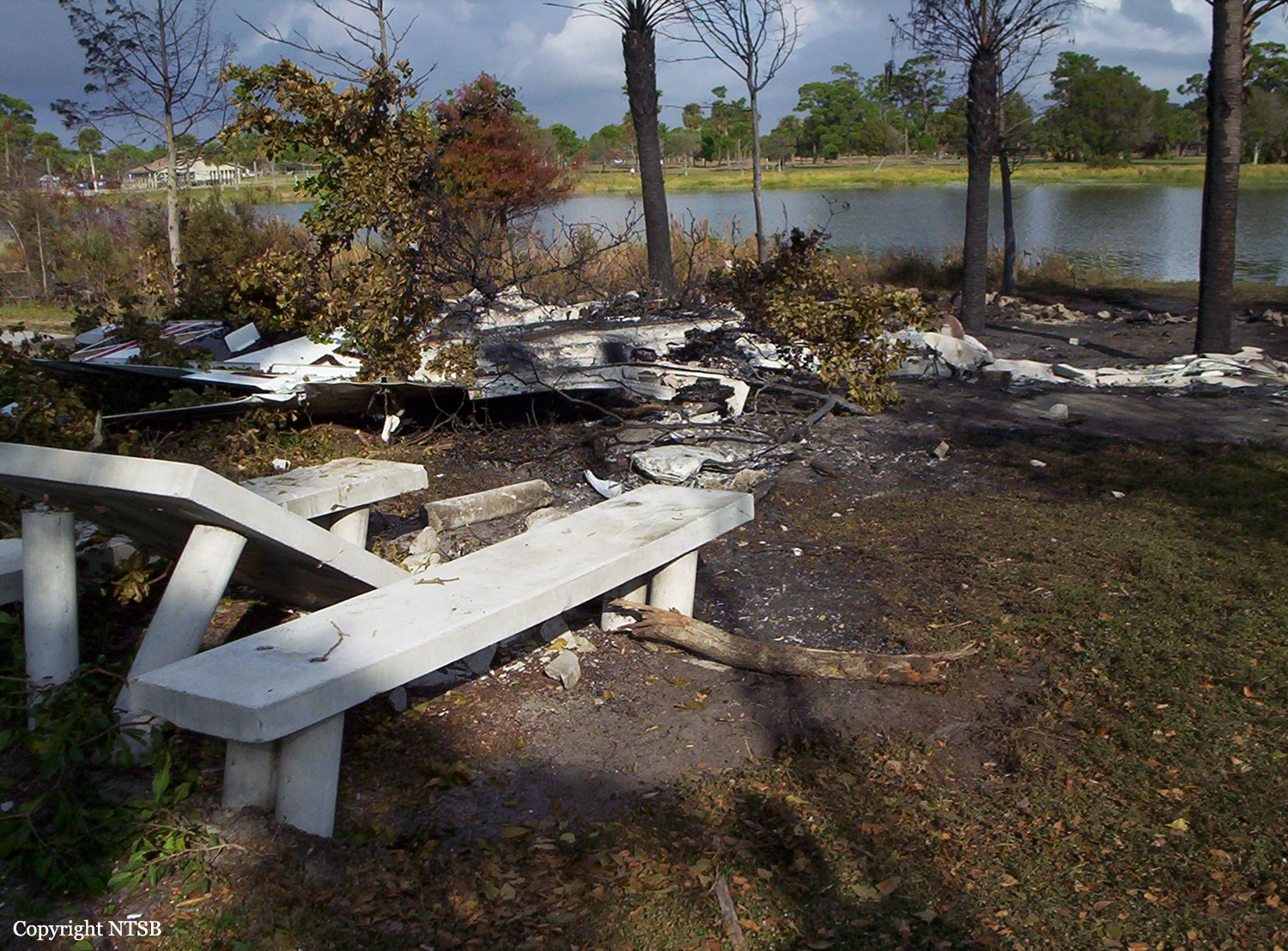
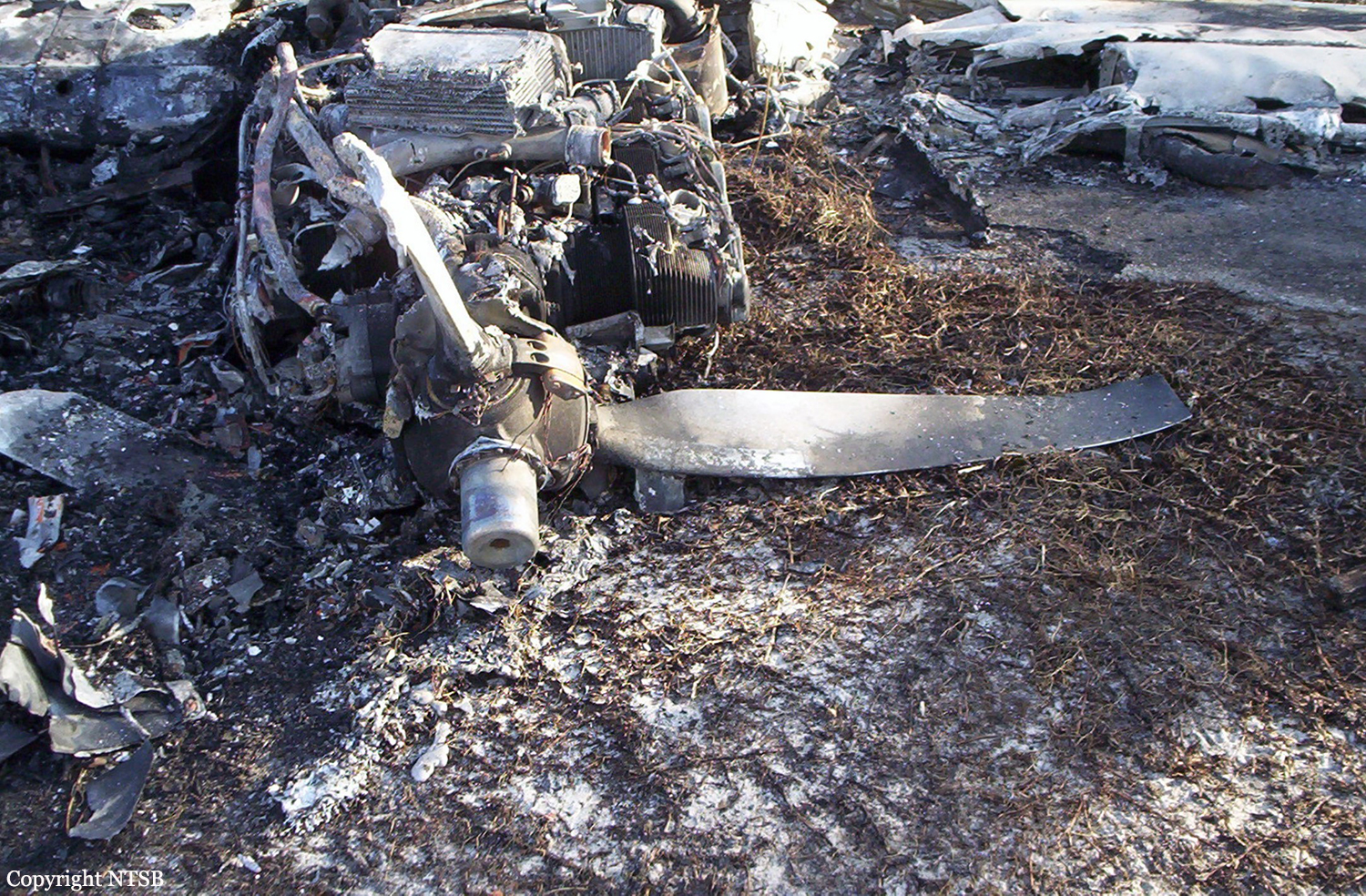
Crash of a Cessna 421C Golden Eagle III in Wells: 1 killed
Date & Time:
Nov 26, 2012 at 2124 LT
Registration:
N67SR
Survivors:
No
Schedule:
West Houston - Tulsa
MSN:
421C-0257
YOM:
1977
Crew on board:
1
Crew fatalities:
Pax on board:
0
Pax fatalities:
Other fatalities:
Total fatalities:
1
Aircraft flight hours:
6736
Circumstances:
The airplane was substantially damaged during an in-flight encounter with weather, in-flight separation of airframe components, and subsequent impact with the ground near Wells, Texas. The private pilot, who was the sole occupant, was fatally injured. The airplane sustained impact and fire damage to all major airframe components. The aircraft was registered to H-S Air LP and operated by the pilot under the provisions of 14 Code of Federal Regulations Part 91 as a business flight. Instrument meteorological conditions prevailed for the flight, which operated on an instrument flight rules (IFR) flight plan. The flight originated from the West Houston Airport (IWS), Houston, Texas, about 2040 and was bound for the Richard Lloyd Jones Jr. Airport (RVS), Tulsa, Oklahoma. Witnesses near the accident site reported hearing an explosion and then seeing a fireball descending through the clouds to the ground. Radar track data for the last portion of the flight depicted the airplane on a 7720 transponder code. The track showed the airplane initially on a heading of about 20 degrees at 23,000 feet. The track continued in this direction until 2120:03.73 when the airplane began a right turn. The right turn continued for about 30 seconds during which time the altitude remained constant and the heading changed to about 90 degrees. After 2120:45.86, the track showed an erratic steep descent that continued to the end of the data. The final data location was received at 2122:15.53 at an altitude of 2,800 feet. The accident location was 0.86 miles and 94 degrees from the last recorded radar position.
Probable cause:
The pilot’s decision to continue the flight into an area of extreme weather, which led to the in-flight encounter with a thunderstorm and structural failure of the wings and tail.
Final Report:

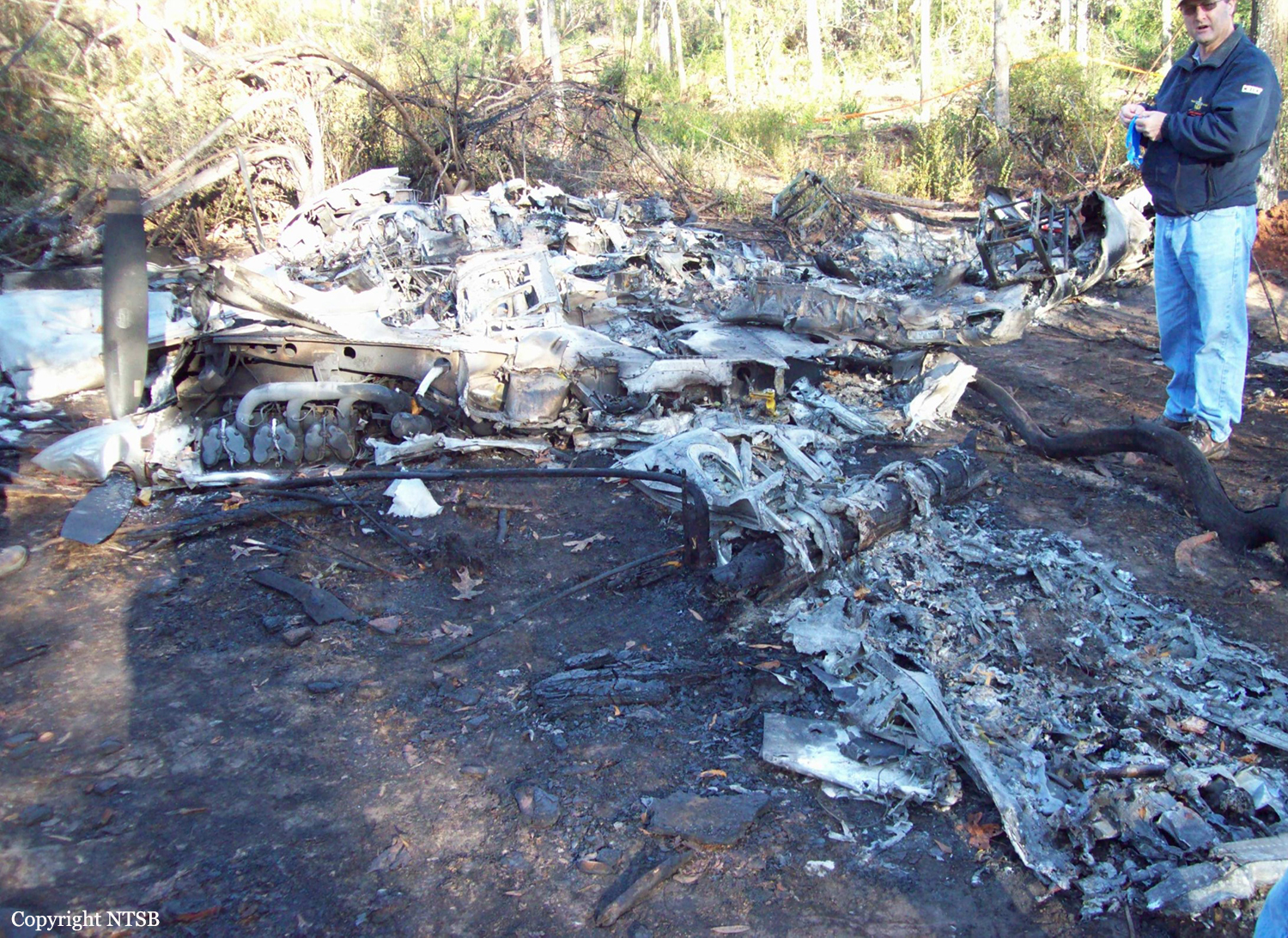
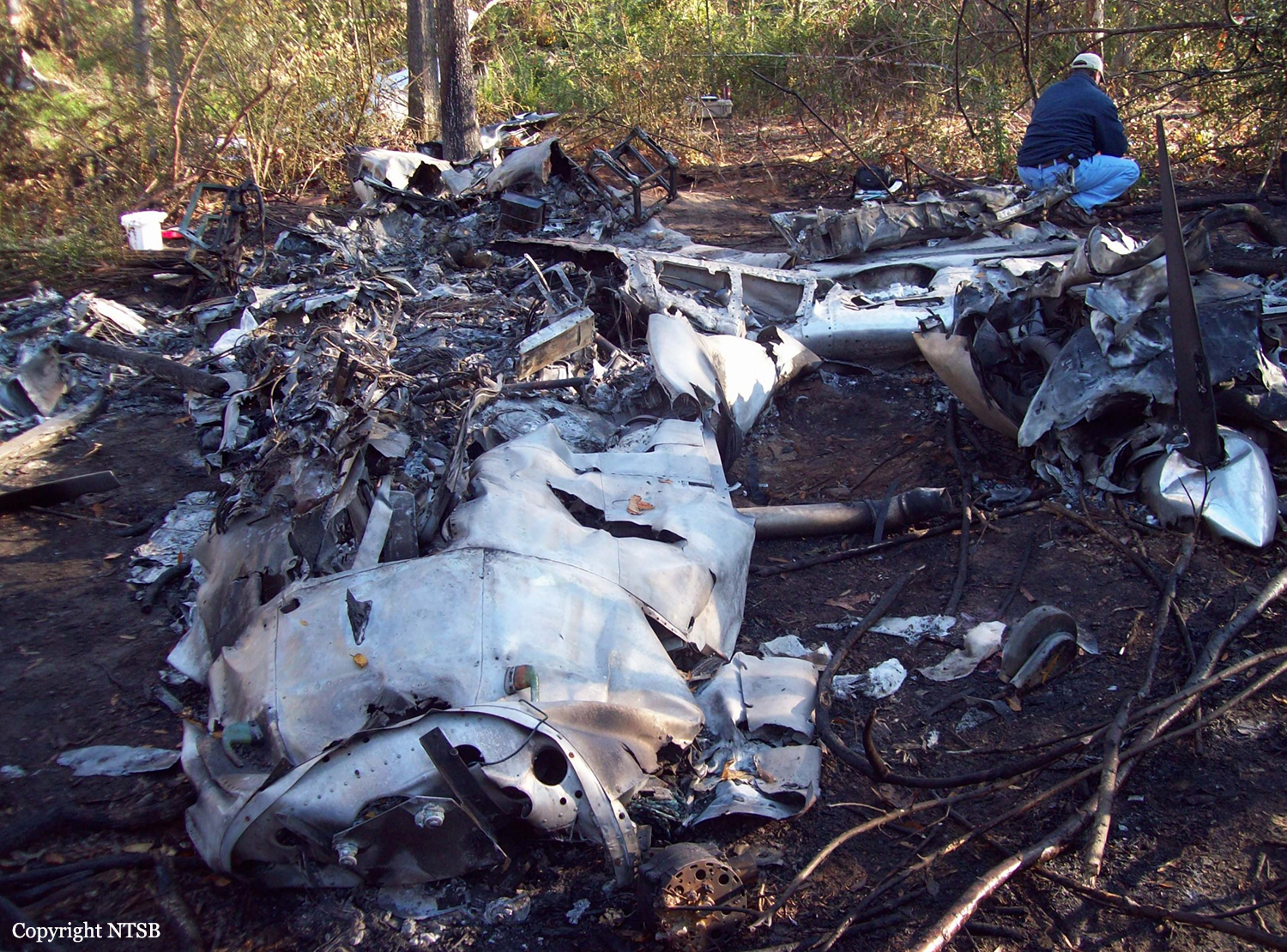

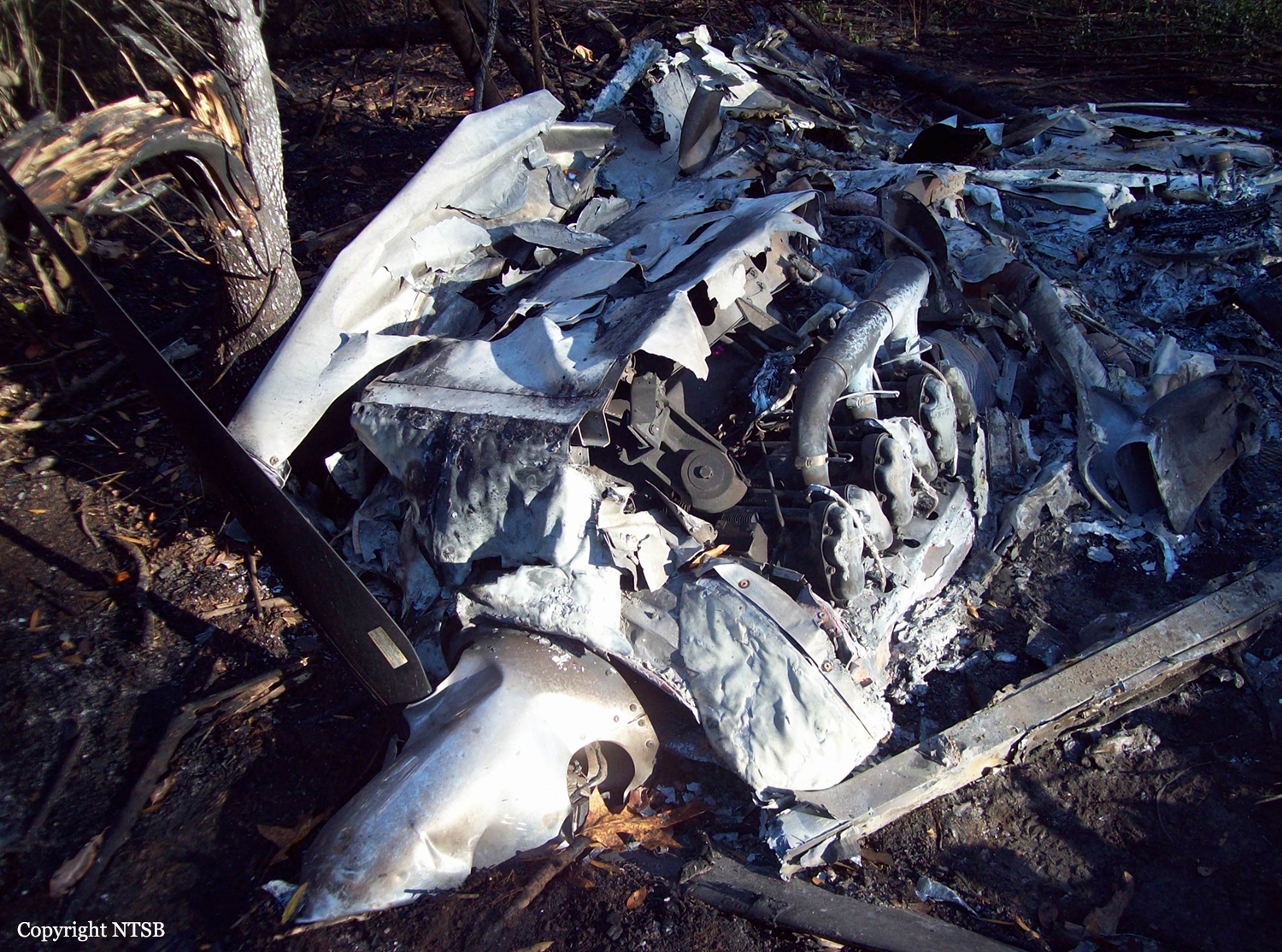
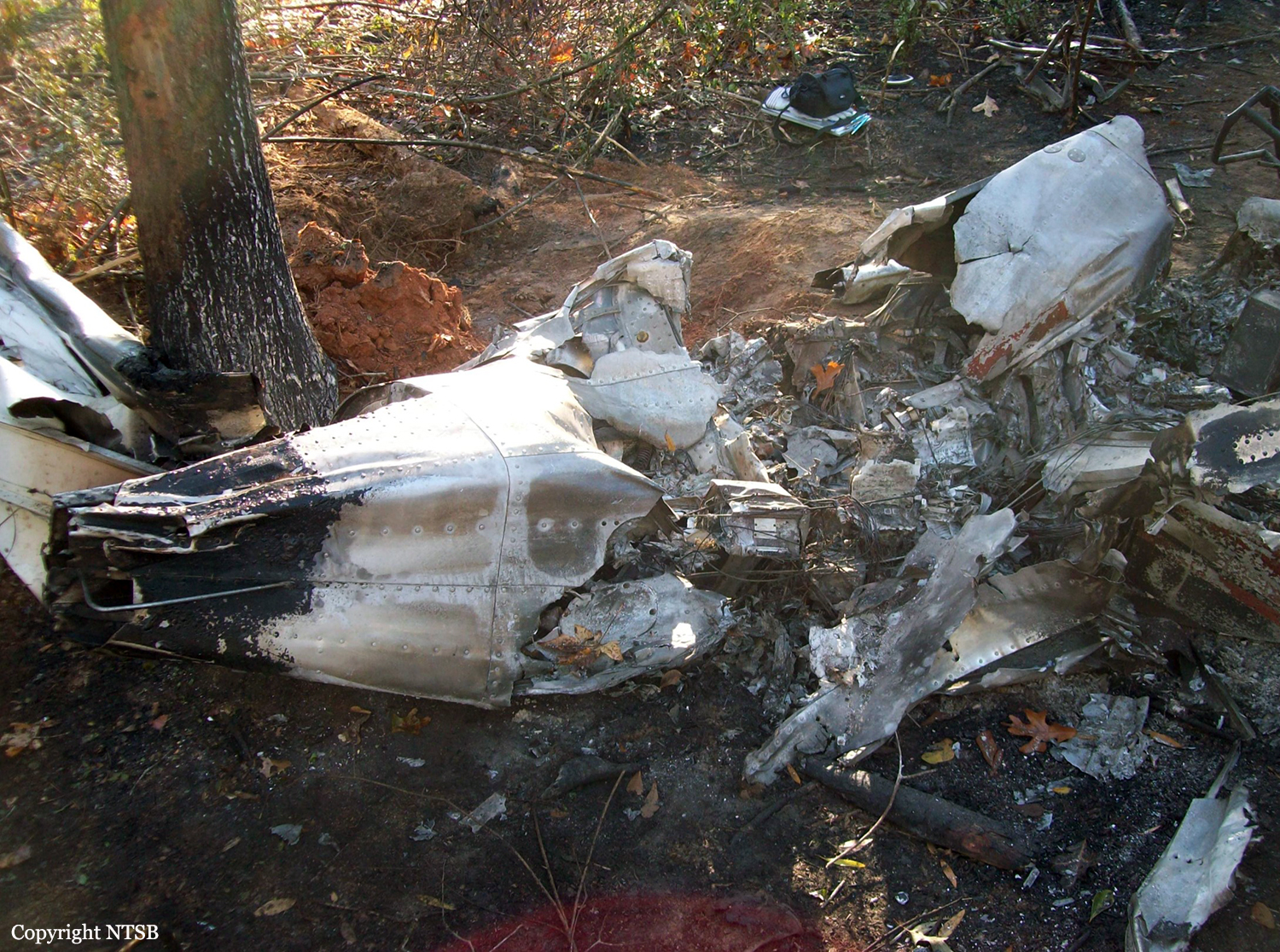

Crash of a Cessna 421C Golden Eagle III in Shaver Lake: 2 killed
Date & Time:
Nov 10, 2012 at 1920 LT
Registration:
N700EM
Survivors:
No
Schedule:
Salinas - Omaha
MSN:
421C-1010
YOM:
1980
Crew on board:
1
Crew fatalities:
Pax on board:
1
Pax fatalities:
Other fatalities:
Total fatalities:
2
Captain / Total hours on type:
102.00
Aircraft flight hours:
5118
Circumstances:
The aircraft impacted terrain following an in-flight breakup near Shaver Lake, California. The private pilot/registered owner was operating the airplane under the provisions of 14 Code of Federal Regulations Part 91. The pilot and passenger sustained fatal injuries. The airplane sustained substantial damage during the accident sequence, and was partially consumed by postimpact fire. The cross-country flight departed Salinas Municipal Airport, Salinas, California, at 1837, with a planned destination of Eppley Airfield, Omaha, Nebraska. Visual meteorological conditions prevailed, and an instrument flight rules (IFR) flight plan had been filed. The pilot was the son of the passenger. Both had spent the weekend attending a driving academy at the Laguna Seca Raceway, having arrived in the accident airplane earlier in the week. According to the pilot's wife, they had encountered strong headwinds during the outbound flight from Omaha, and had decided to take advantage of tailwinds for the return flight that night, rather than stay in a hotel. The pilot planned to return his father to Omaha, and then fly to his residence in Missouri the following day. Radar and voice communication data provided by the Federal Aviation Administration (FAA) revealed that prior to departure, the pilot was given an IFR clearance to Omaha, and that during his interaction with clearance delivery personnel he read back the clearance correctly. A few minutes after departing Salinas the airplane was cleared to fly direct to the Panoche VORTAC (co-located very high frequency omnidirectional range (VOR) beacon and tactical air navigation system). The airplane followed a direct course of 60 degrees; reaching Panoche at a mode C reported altitude of 17,200 feet, about 14 minutes later. The airplane continued on that course, reaching the Clovis VOR at 1912, coincident to attaining the pilots stated cruise altitude of 27,000 feet. The pilot reported leveling for cruise, and flying direct to Omaha. The sector controller reported that the pilot should fly direct to the Coaldale VOR and then to Omaha, and the pilot responded, acknowledging the correction. For the next 5 minutes, the airplane continued at the same altitude and heading, with no further transmissions from the pilot. The airplane then began a descending turn to the right, with a final mode C reported radar target recorded 60 seconds later. During that period, it descended to 22,600 feet, with an accompanying increase in ground speed from about 190 to 375 knots. For the remaining 6 minutes, a 6.5-mile-long cluster of primary targets (no altitude information) was observed emanating from the airplane's last location, on a heading of about 150 degrees. Following the initial route deviation, the air traffic controller made five attempts to make contact with the pilot with no success. Throughout the climb and cruise portion of the flight, the airplane flew directly to the assigned waypoints with minimal course variation, in a manner consistent with the pilot utilizing the autopilot.
Probable cause:
The pilot's failure to regain airplane control following a sudden rapid descent during cruise, which resulted in an in-flight breakup. Contributing to the accident was the pilot's decision to make the flight with a failed vacuum pump, particularly at high altitude in night conditions.
Final Report:

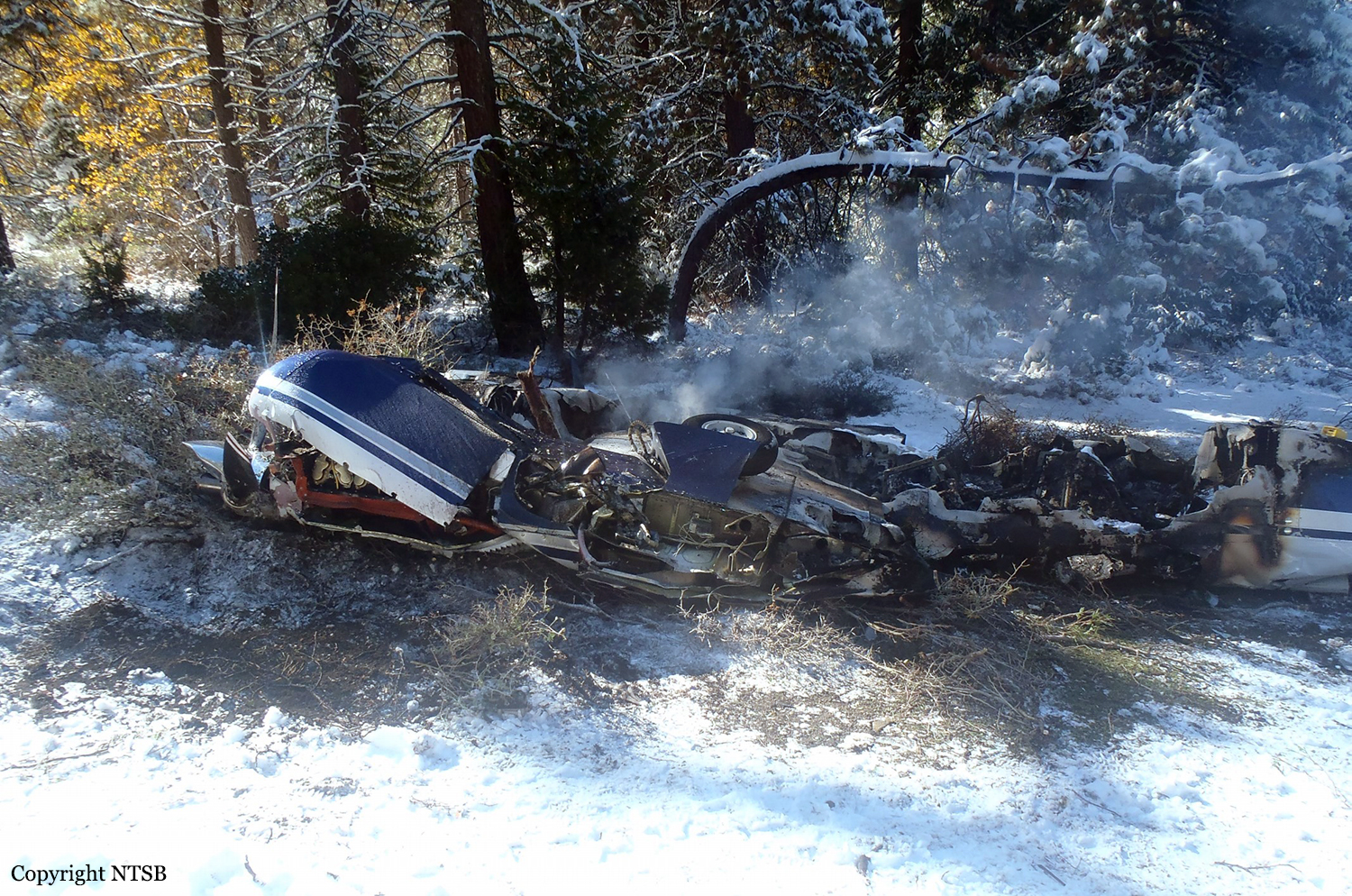
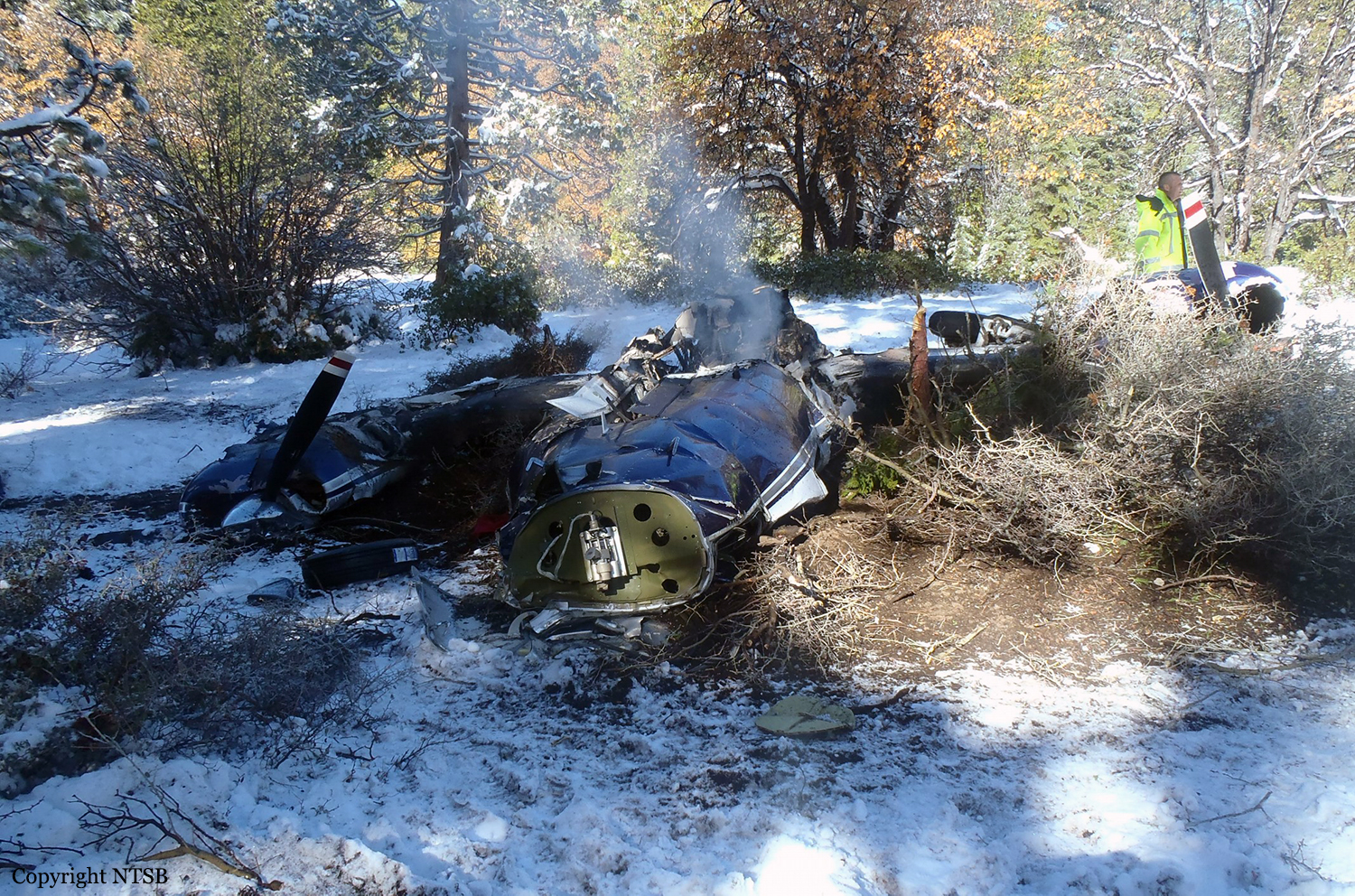


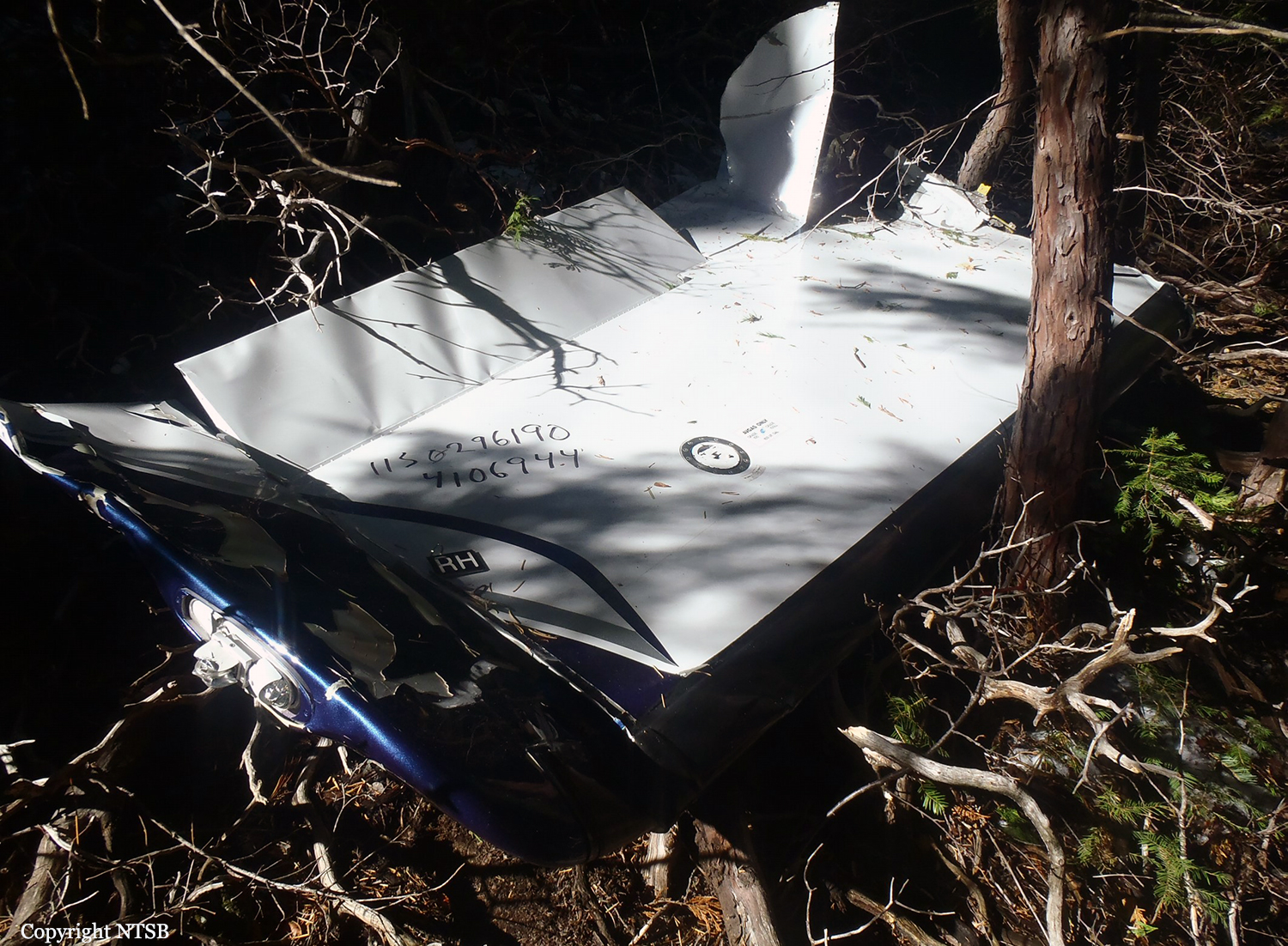
Crash of a Cessna 421C Golden Eagle III in the Gulf of Mexico: 1 killed
Date & Time:
Apr 19, 2012 at 1208 LT
Registration:
N48DL
Survivors:
No
Schedule:
Slidell - Sarasota
MSN:
421C-0511
YOM:
1978
Crew on board:
1
Crew fatalities:
Pax on board:
0
Pax fatalities:
Other fatalities:
Total fatalities:
1
Aircraft flight hours:
4659
Circumstances:
According to a statement provided by the Jacksonville Center air traffic control (ATC) facility, the pilot contacted ATC while at flight level 270. About 25 minutes later, the airplane began to deviate from the ATC-assigned altitude and route. The controller’s attempts to contact the pilot were unsuccessful. The North American Aerospace Defense Command launched military fighter aircraft to intercept the airplane. The military pilots reported that the airplane was circling in a left turn at a high altitude and low airspeed and that its windows were partially frosted over. They also reported that the pilot was slumped over in the cockpit and not moving. They fired flares, and the pilot continued to be unresponsive. The airplane circled for about 3 hours before it descended into the Gulf of Mexico and sank. The pilot and airplane were not recovered. Review of the pilot’s Federal Aviation Administration medical records did not reveal any recent medical conditions that would have deemed him unfit to fly.
Probable cause:
Pilot incapacitation, which resulted in the pilot’s inability to maintain airplane control and the airplane’s subsequent ocean impact.
Final Report:
